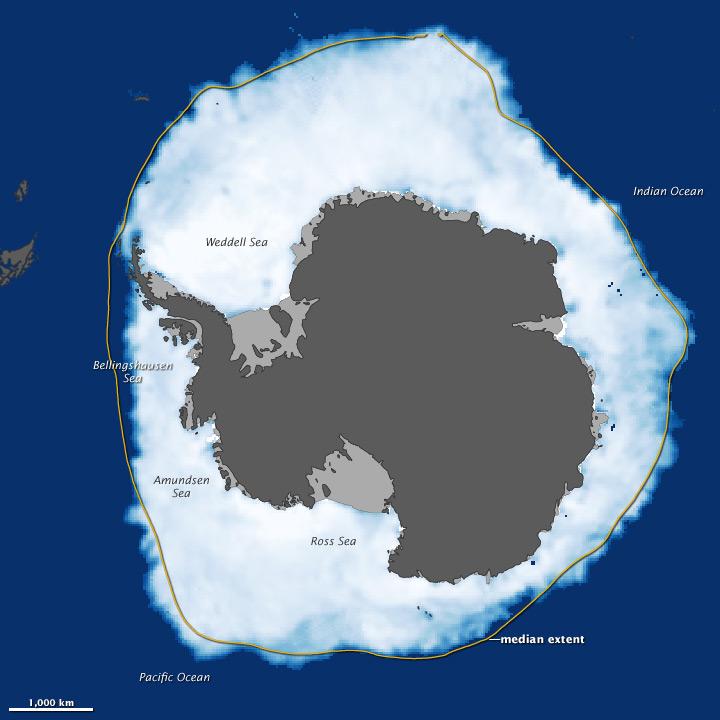Antarctic Sea Ice Reaches Record High Levels


The sea ice circling Antarctica reached record levels late last month, extending 7.51 million square miles (19.44 million square kilometers), the most ever recorded by satellite.
The previous record was set in 2006, at 7.49 million square miles (19.39 million km), according to the National Snow and Ice Data Center (NSIDC).
On Sept. 26, microwave imagers flown as part of the Defense Meteorological Satellite Program captured the maximum sea ice extent. Dark gray land fills the center of the image, and light gray ice shelves float just offshore. (Ice shelves are the tongues of land-bound glaciers that extend out into the sea.) The yellow outline circling Antarctica defines the median sea extent from 1979 to 2000 — the total area in which the ice concentration in the ocean was at least 15 percent.
The record ice pack is likely due to stronger winds caused by warming temperaturesin the Antarctic, according to a NASA statement. These circumpolar winds generally act to blow sea ice outward, except in the Antarctic Peninsula region, where winds from the north push the ice southward. Thus, sea ice extent near the northwestern Antarctic Peninsula declines rapidly, while areas in the Ross Sea and the southern Indian Ocean show significant increases, according to NASA.
Just as the Antarctic reached its zenith, the Arctic ice pack shrank to its minimum extent for the year– and it was a record low. The minimum was set on Sept. 16, at 1.39 million square miles (3.61 million square km). That is almost 300,000 square miles (777,000 square km) less than the previous record minimum set in September 2007 (1.61 million square miles or 4.17 million square km).
Scientists with the NSIDC have noted that the growth in Antarctic sea ice does not disprove global warming. For one thing, the two hemispheres are in opposite seasons; the geology between the Arctic and Antarctic is also different, leading to different effects on sea ice. The ozone hole may also be linked, as it influenced the atmospheric circulation, and therefore the winds, above Antarctica.
Follow OurAmazingPlanet on Twitter @OAPlanet We're also on Facebook and Google+.
Get the world’s most fascinating discoveries delivered straight to your inbox.



